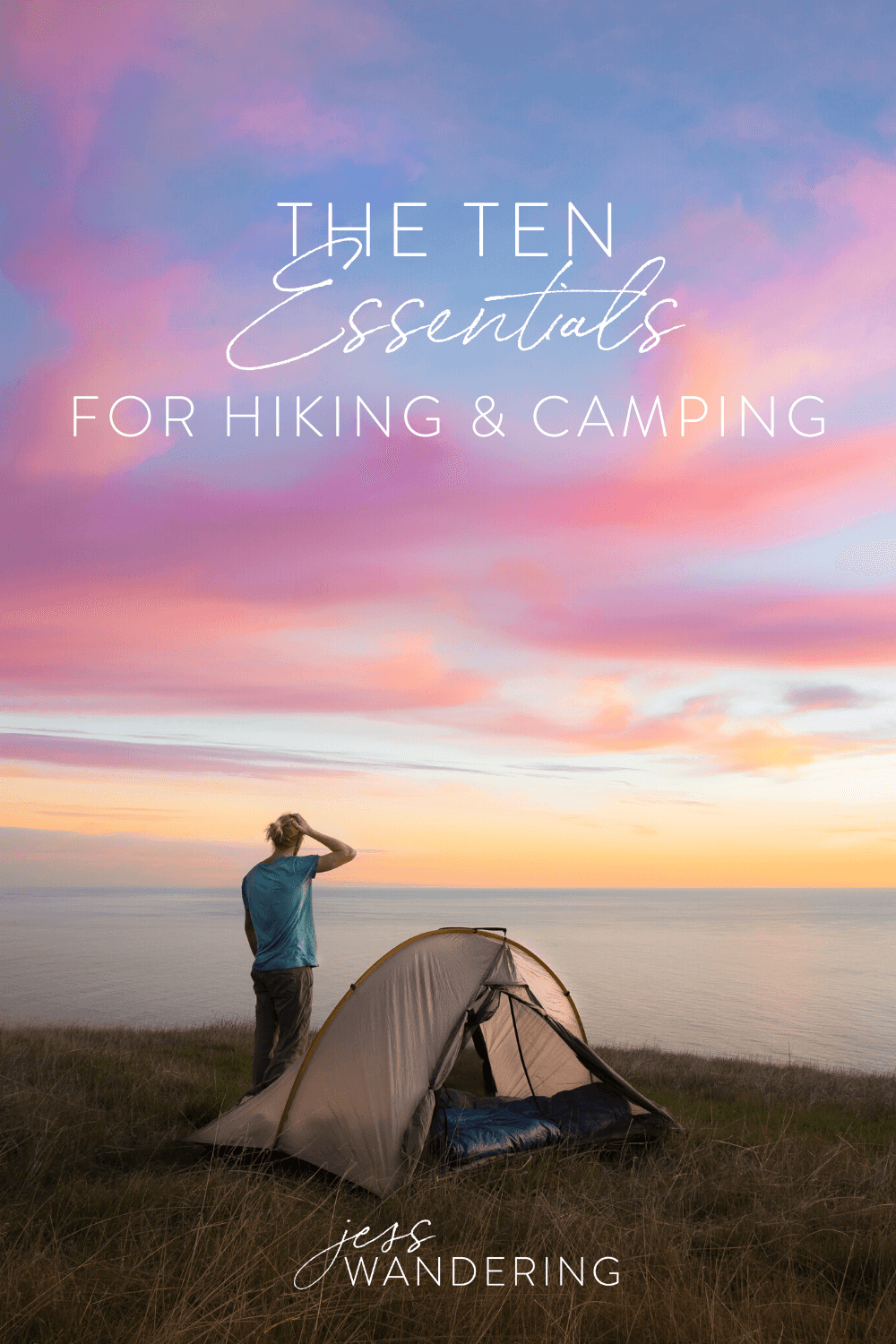
Intro To The Ten Essentials
Part of the thrill of outdoor adventure travel is stripping away the noise and getting back to basics—finding yourself alone in the wilderness with nothing man-made in sight, only emerald treetops, snow-capped mountains, and the Milky Way Galaxy overhead unpolluted by city lights.
But Mother Nature demands respect. When you leave the safety net of civilization, you enter the realm of survival of the fittest, the purest environment of consequences. It might sound scary, and that fear is justified. People have died from exposure within eyesight of downtown Anchorage, Alaska.
I love to disconnect, but I don’t have a death wish. I try to pack for freedom, but I never neglect the 10 essentials of outdoor adventure. These aren’t so much specific products as they are concepts—an emergency-preparedness checklist that encompasses several functional systems (as opposed to specific items). Most of these essentials are lightweight and all are designed to make it so that even if the unexpected happens in the backcountry, you will return to tell the amazing tale. As the saying goes it’s better to have the 10 Essentials and not need them, than to need them and not have them! Okay, maybe the saying doesn’t go that way. But it should!
The 10 essentials of outdoor adventure: What They Are & Why You Need Them
1. Hydration
Humans can go weeks without food but only days without drinking fresh water. In the event of an outdoor emergency, extra water can save your life. But first you’ll need a way to filter and purify water so that it is safe to drink!
Most lakes and streams are contaminated with bacteria, especially in the wilderness of the United States. However, with some foresight any body of water can still become an emergency water supply. Consider packing a water purification system of some sort. Examples include iodine tablets, a filtration pump, or a water filter bottle. If you bring cooking equipment, stream and lake water is also safe to drink after you boil it for 10 minutes.
The system that works best for you will depend on where you are going, how long you are going for, and personal preference.
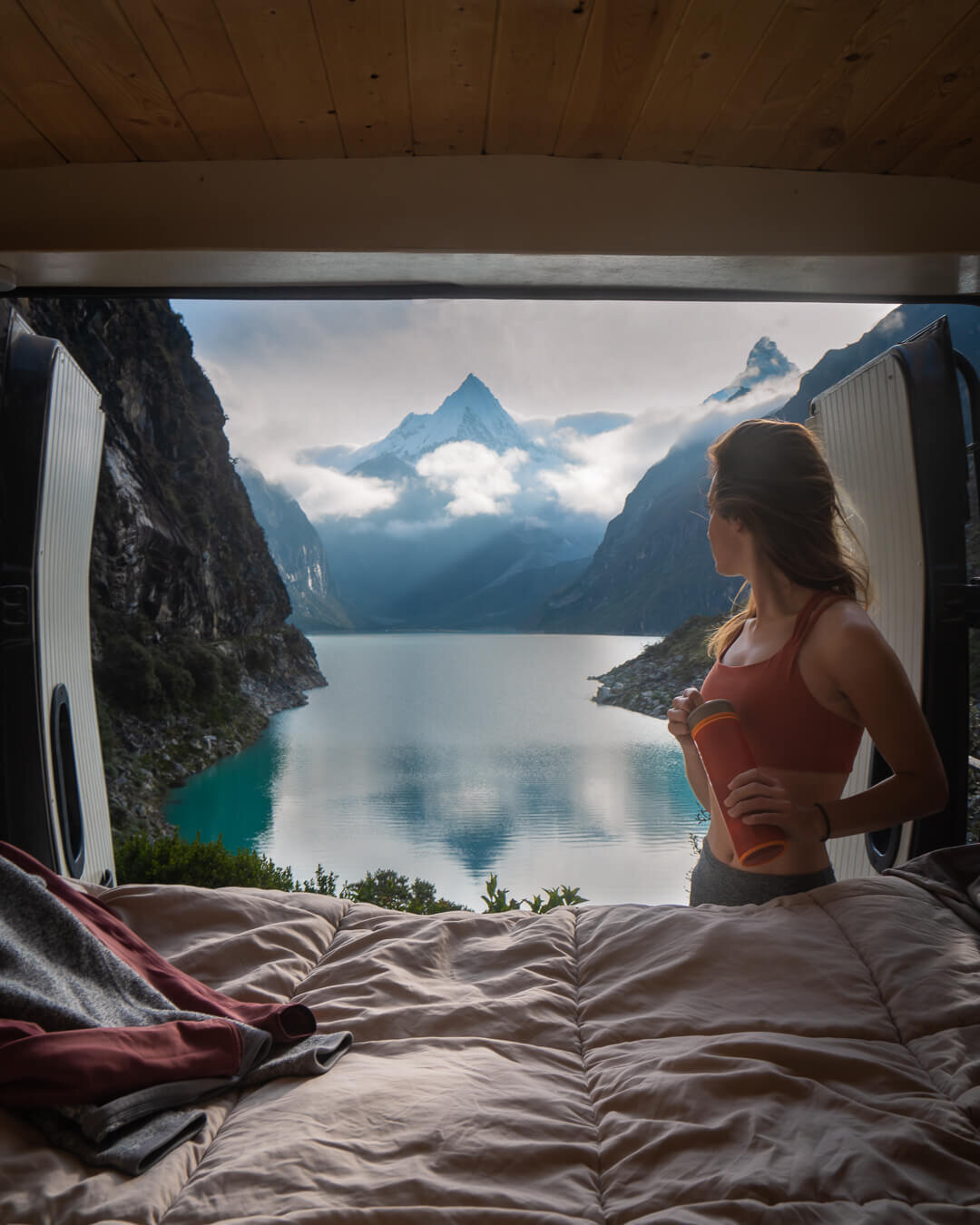
Using the Gryle Water Purifier bottle to filter bacteria and water born viruses in Peru.
Purification Tablets – I ALWAYS try and have purification tablets with me as a backup. It doesn’t matter if I’m on a day hike or a backpacking trip. Sure they might make the water taste a little funny, but I think they are hands down the lightest weight, most reliable method of purifying water, and critical if your primary method breaks down. The downside to chemical treatments is that there is a wait time before you can drink the water – about 30 minutes.
SteriPEN Adventurer Opti – The SteriPEN is another quick and easy purification method. It works by creating Ultraviolet (UV-C) light rays that sterilize clear water by destroying bacteria and even viruses. You simply press a button and gently stir the water in your water bottle. The biggest downside to the SteriPEN is that it’s battery-operated, and I’m never quite sure if it actually worked or not. . . but that’s my personal trust issue. The main downside is that the SteriPEN is battery operated, but I’m slowly learning to trust it.
Platypus GravityWorks Filter System – This is a great option if you are going on a longer backcountry trip and anticipate needing to filter a large quantity of water quickly. The GravityWorks System is simple, and intuitive to use and cleaning.
Unlike the Chlorine Dioxide or SteriPen which are water purifiers, the GravityWorks System is a water filter. The difference between a water “filter” and a water “purifier” is that purifiers remove or kill viruses and filters do not.
That being said, viruses are rarely a concern in North America, so most US backpackers don’t worry about treating them. If you are traveling abroad to a country with less developed sanitation systems, you should supplement your filtration method with a chemical treatment or UV filter.
Gryle Water Purifier Bottle – I love this bottle. It’s simple to use and filters out both bacteria and water-borne viruses. It works for hikes with frequent water sources, but is even better for traveling in places without potable water. I’ve traveled throughout Mexico and South America with my Gryle and never once had to buy a single-use plastic water bottle. Pretty awesome! If you decide to go with the Gryle for an extended international trip, I would buy an extra filter just in case.
Katadyn BeFree Water Filtration System is another great all-in-one system, and it’s much lighter than the Gryle for long hikes. I’ve probably used every water filtration system out there at this point. And to be honest, I think they all have a time and a place. I’ve been using Katadyn BeFree Filter on trips where I know there will be plenty of access to water, and I want to go super lightweight.
2. Food
When the unexpected happens, thinking on your feet can save your life. That’s harder to do if you’re starving. Carry nutrient-dense snacks that will keep your energy high and your mind clear as you navigate the wilderness. I carry dried fruits, nuts, seeds, energy bars, and trail mix to keep my blood sugar optimal on my treks. But the key is bringing more food than you will need – just in case. As a good rule of thumb, however many days you are planning on spending in the backcountry—even if it’s just one—bring at least one extra day’s worth of food. An easy and ultra-lightweight way of doing this is to throw an extra dehydrated backpacking meal in your pack. My favorites are made by Good To-Go.
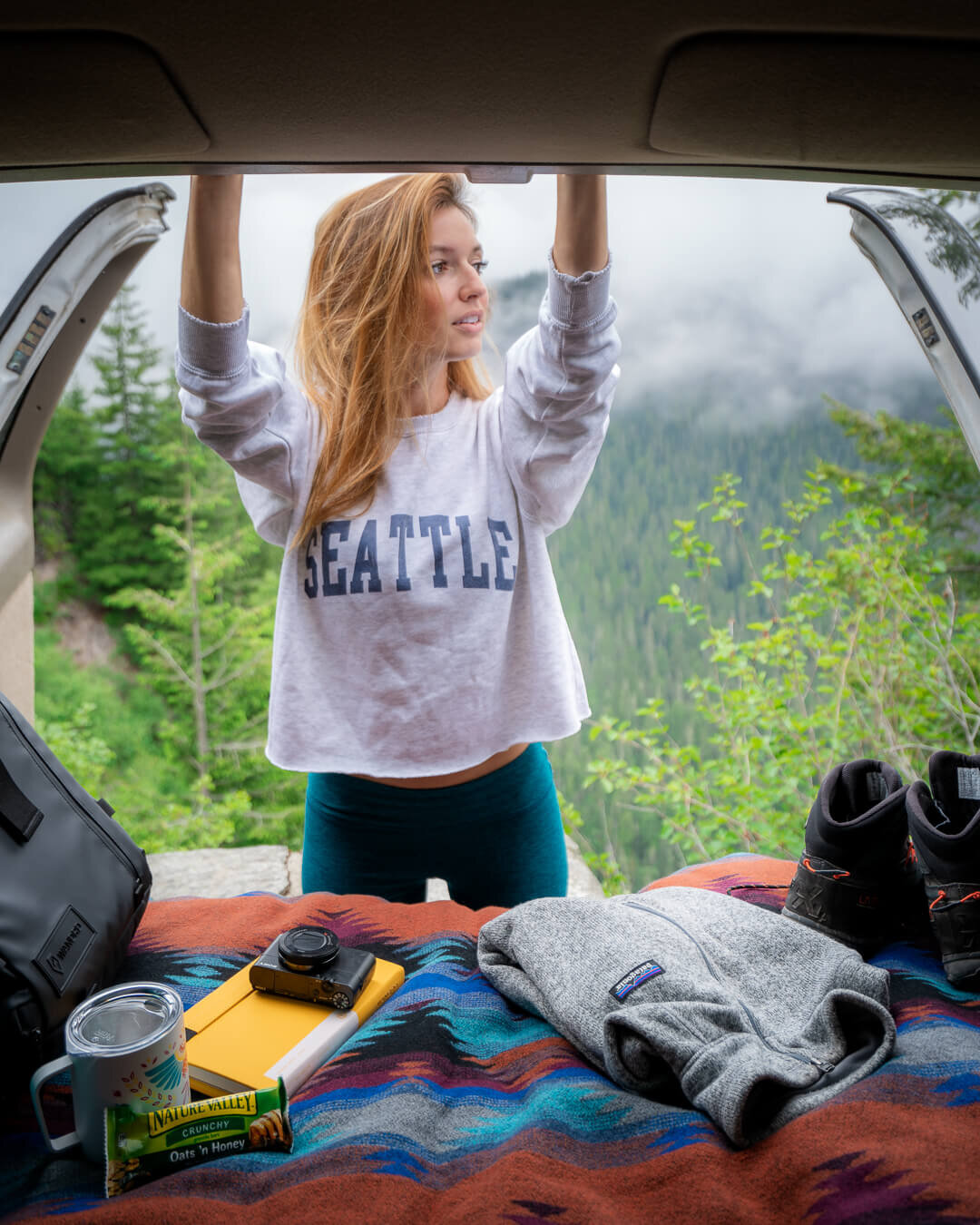
It’s important to pack extra calories and clothing on every hiking and camping trip. Shown: Patagonia Better Sweater.
3. A Change of Clothes
Becoming stranded in a rainstorm can actually be fun … as long as you are prepared. Once you find shelter or the weather passes, soaked clothing can be uncomfortable or even life-threatening if temperatures fall low enough to induce hypothermia.
Having cut my outdoor-adventure teeth in my home state of Washington, I prepare for the cold and the rain. I always bring a full change of clothes, including socks, long pants, layered tops, and a beanie. I opt for thermal layers in case I have to weather a drop in temperature unexpectedly. Thermal fabrics are lightweight, easy to pack, moisture-wicking, and in colder climates like the Pacific Northwest they can make the difference between a thrilling jaunt and a miserable slog.
For more tips on how to stay warm in the mountains, check out my Cold Weather Camping Hacks!
4. Shelter
If you become lost and have to unexpectedly spend a night in the wilderness, you will thank yourself for packing an emergency shelter. It doesn’t have to be a full-on tent (although if you’re packed for backpacking, then your set!). A bivy sack, space blanket, or lightweight tarp will protect you from the elements and critters reasonably well and provide a cocoon of security so you can rest up for tomorrow’s daring return to civilization.

A tent is the most secure shelter you can carry with you, but there are other lighter options available as well including emergency blankets and tarps.
Pro Tip: Even a large plastic trash bag is better than nothing. They can also act as easy makeshift rain ponchos to keep your clothes and gear dry in a flash rainstorm.
5. First Aid
In a way, it’s wonderful that we take modern medicine for granted. So many injuries and diseases that would have been fatal in the past are mere nuisances to us. But that security falls away the further you trek from the nearest hospital. Injuries and illnesses can quickly become serious if you don’t have access to the proper first aid.
Field first aid kits might contain bandages, scissors, needles and threads, fever reducers, antibiotics, antihistamines, disinfectant ointments, epi-pens, and more. I don’t recommend that you try to assemble a first aid kit from scratch. Look for a pre-assembled first aid kit and make sure it addresses any pre-existing conditions you might have. Then add any extra items you foresee yourself needing in an emergency.
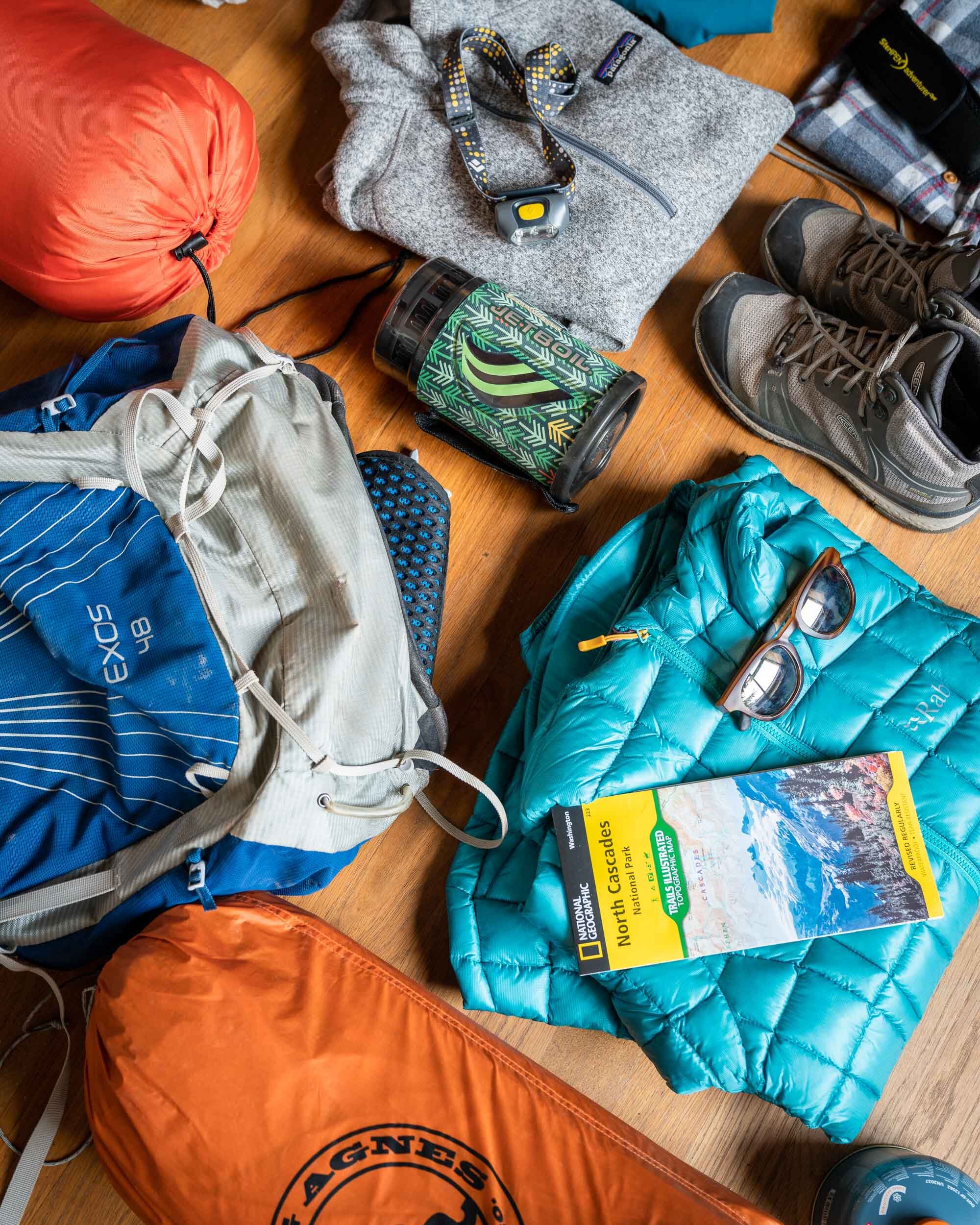
It’s always a good idea to lay all your camping gear out before packing to make sure you have everything you need.
6. Navigation
Proper attention to navigation can help you avoid becoming lost, or even allow emergency rescue personnel to find you in an emergency. Many people neglect navigation, but to do so on the trail is really tempting fate.
Many components go into a solid navigational plan. Consider:
-
A compass will prevent you from trekking 20 miles in the wrong direction in search of civilization.
-
A map will tell you which direction on the compass leads to safety.
-
A GPS device may perform the functions of a map and a compass, allowing you to track your own position and navigate to safety. Many GPS devices also include S.O.S. and messaging capabilities that will alert search and rescue with your exact location in case of an emergency.
-
An altimeter, a device that measures barometric pressure to tell you your elevation above sea level.
-
A personal locator beacon (PLB). Wilderness retreats often don’t have cellular service—but you can access government satellites. These authorized devices allow you to send an emergency signal that rescue workers can track. These are often incorporated into GPS devices.
Many of these functions (GPS, altimeter, etc.) can live on your smartphone, even if you are out of cellular data range. Two of my favorite off-line map apps that I use both for outdoor adventures and international travel when I don’t have cellular service is Gaia GPS App and Maps.Me. However, cell phone batteries tend to die when operated continuously. So, I bring an external USB battery charger so my phone stays charged. Plus, it comes in handy for recharging camera batteries too!
Honestly, if I was making a new “10 Essentials” list I’d probably add “Power” as an 11th category. While it’s true that my external charger has probably never saved my life – I can’t tell you how many times it has saved the day!
For the hardcore adventure traveler, a satellite phone may be a worthwhile investment. These phones can use government satellites to make calls in an emergency (or even in a non-emergency). For many outdoor enthusiasts, however, these expensive phones will be overkill.
7. Light
Another thing we take for granted is how electric light banished the dangers of darkness. If you end up stranded in the wilderness, that danger comes back with a vengeance. Even if you don’t get lost or stranded, it’s not uncommon for a hike to go a little longer than you expected. I know it’s happened to me on more than one occasion. Then all of a sudden, if I’m not prepared, following the trail can become a major struggle – and hazard. It’s hard to stress just how unused to complete darkness our light-polluted world has made us. You might get lucky with a full moon … but for some people, a full moon and a starry night illuminates your surroundings just enough to enhance the feeling of lurking danger.
This kind of anxiety isn’t good for responsible decision-making. Fight it with a lightweight flashlight or headlamp, and make sure to bring extra batteries. I prefer a headlamp because it allows me to keep my hands free. Which is nice if you’re trying to do something like cook dinner, or set up a tent!
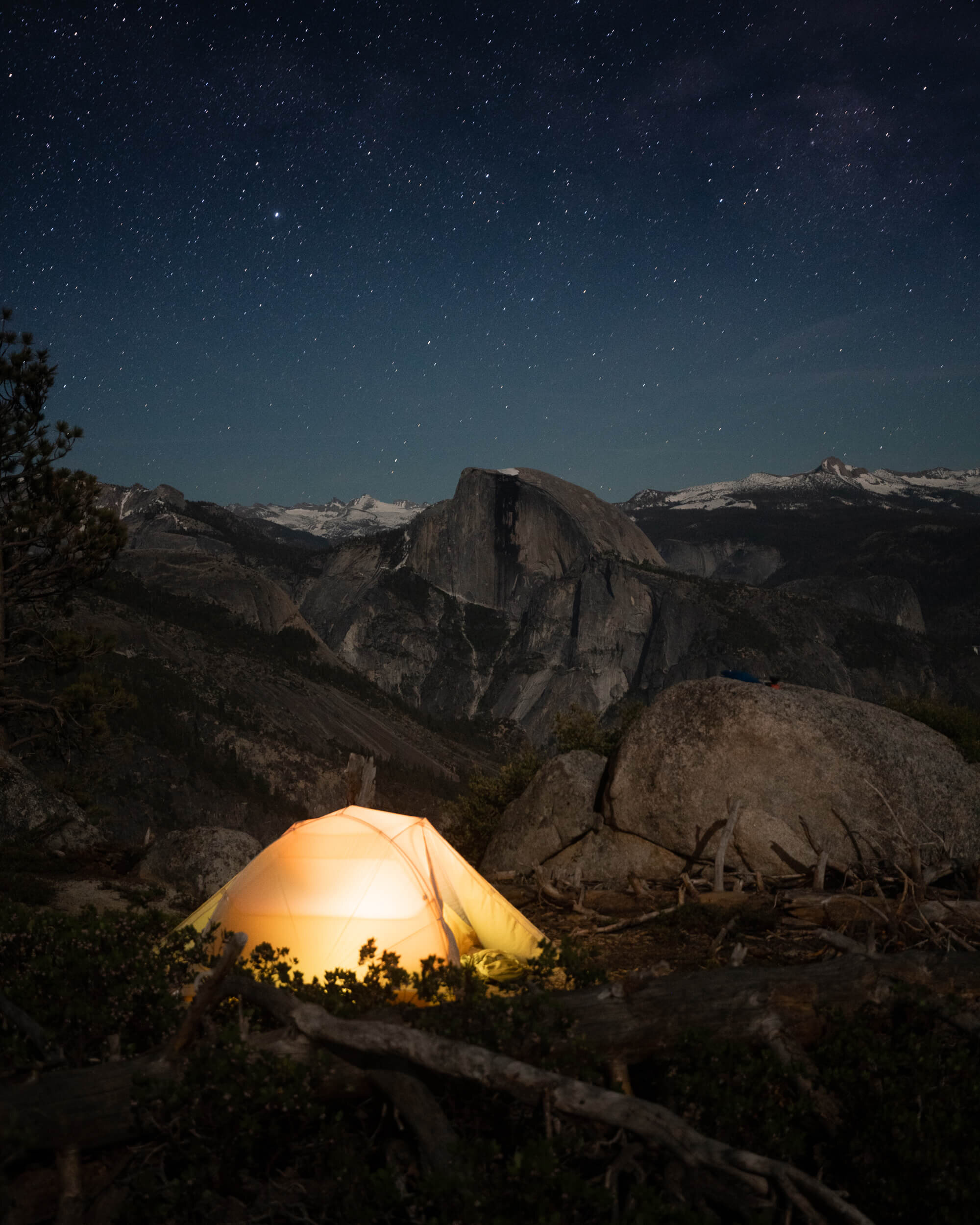
The photo was taken on a backcountry camping trip in Yosemite National Park. Most tents have mesh pockets you can place your headlamp in for light at night. Alternatively pick up a small tent lantern for some nice ambient light. Shown: Big Agnes 2 Person Tent.
8. Fire
Many state and national parks forbid open fires, but if you have to weather a cold night in the wilderness, a campfire may save your life, and the smoke may provide an easy beacon for rescue workers to find you. Waterproof matches are an easy choice, as the lighters you’ll find in every gas station on the way to your outdoor adventure. You can also go chemical-free with an easy-to-use, waterproof magnesium spark lighter.
Even without an emergency, having a fast an easy way to create fire is comes in handy for lighting camp stoves and cooking food. Dehydrated camp food just isn’t quite as good when you have to eat it cold! I make it a habit of keeping a lighter inside my camp stove as added security.
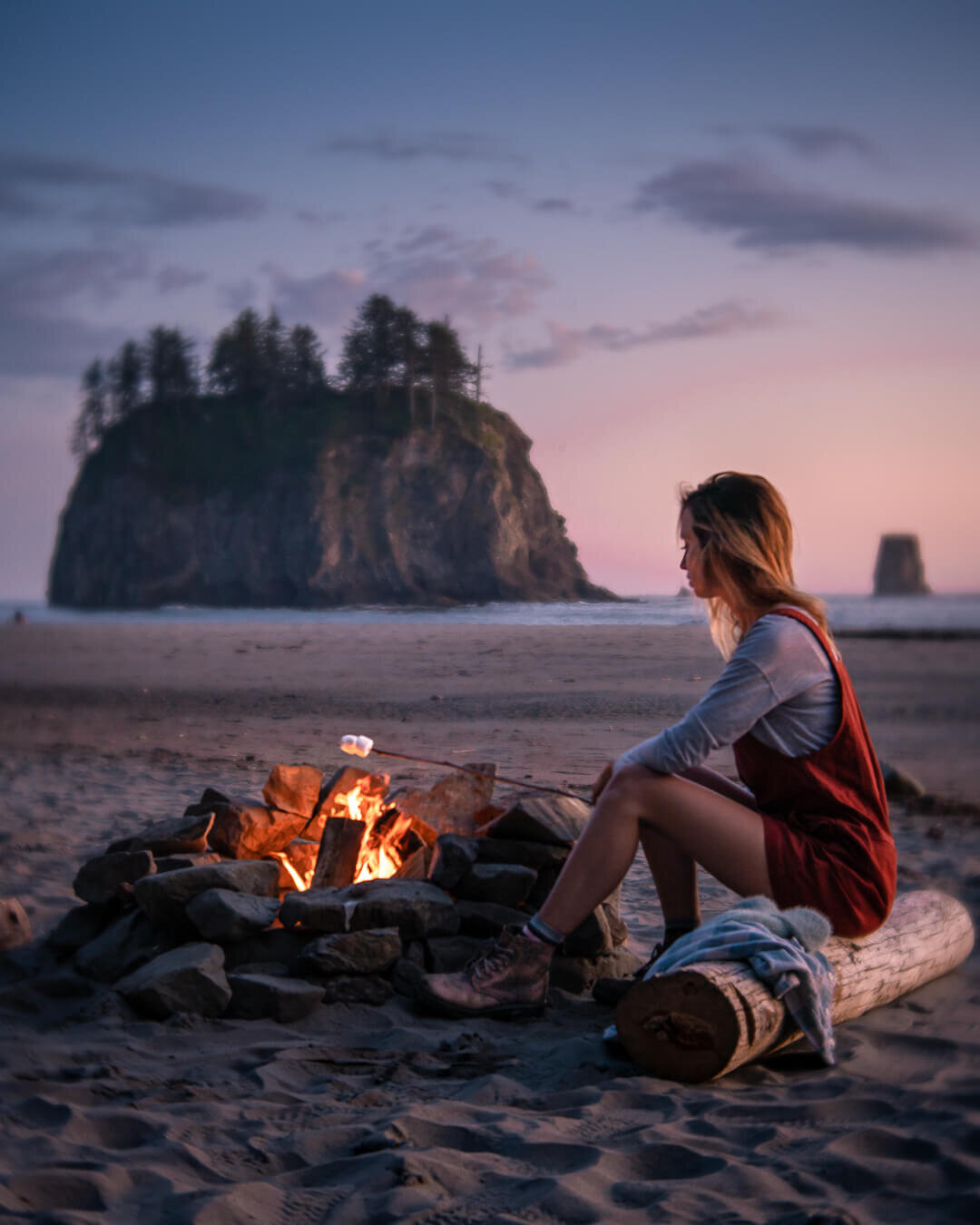
Camping at Second Beach on the Olympic Peninsula in Washington. Wearing: Toad&Co Jumper ,The North Face Long Sleeve Shirt, and Blundstone Lace-Up Boots.
Pro Tip: It is harder to light wood on fire than you think. Thick or even thin sticks won’t blaze up unless they are exposed to a flame for an extended period of time. That’s why you need an easy-flaming substance to get your fire started. Newspaper works well, but the lint from the lint trap of your clothes drier is even better. It burns for a long time, compresses for easy packing. and weighs next to nothing.
9. Sun Protection
Exposure to Vitamin D-enriching sunlight is a major selling point for getting outside, but nothing epitomizes “too much of a good thing” like a sunburn. Over the long term, sunburns age your skin prematurely and increase your risk of skin cancer. Over the short term, over-exposure to the sun can cause dehydration and heat stroke. This is particularly true at high elevations!
Make it a habit to never hit the trail without meticulous preparation for sun exposure. This means:
-
Sunglasses to protect my eyes from UV damage.
-
Sunscreen to prevent sunburn.
-
A hat to keep the sun off my face.
-
Lightweight long-sleeved tops and long pants to keep the sun off my arms and legs when they have had enough.
Don’t forget water! Drinking enough water is a crucial part of managing the effects of sun exposure. If you’re already thirsty, you waited too long. Safe backcountry travel means drinking water consistently, even when you aren’t thirsty.
Pro Tip: The North Face HyperLayer Long Sleeve is a super light weight base layer that I bring with me on summer trips into the mountains. I can wear it even when temps start to rise and know that the long sleeves with UPF 30 are protecting my skin from the strong high altitude UV rays.
10. Knife
There’s a reason a lot of outdoor enthusiasts obsess over having the right knife or multi-tool. It comes in ridiculously handy in a pinch, from food prep, to first aid, and gear repair. I carry a folding multitool with a retractable blade. On more than one treks, I have been glad I did.
As you likely picked up on by now, I like to pack as light as possible. It’s liberating to be out in nature with nothing but a lightweight pack. It allows you to enjoy your time on the trail and in the backcountry unencumbered by the cares and false conveniences of modern living. But as ultra-light as I like to travel, the 10 Essentials always come with me.
Luckily everything on this list is available in a form that takes up minimal space and fits into a small daypack. Like anything worth doing in life, backcountry travel entails some level of risk. These ten essentials help manage that risk—and managing risk is a critical part of responsible outdoor recreation.
For even more outdoor gear check out my complete Hiking & Camping Gear Guide! It’s full of tried and true gear that has passed the test of time.
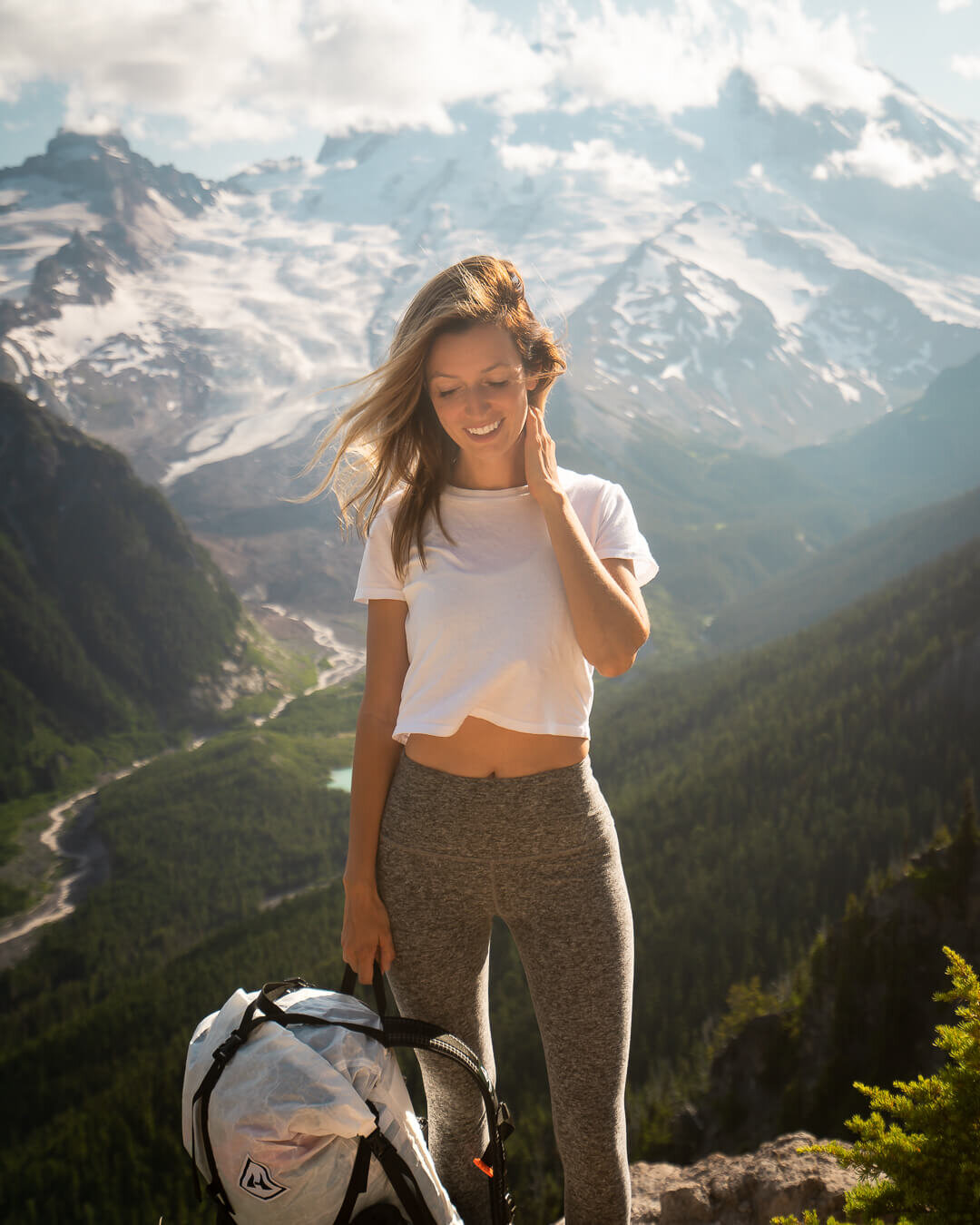
Shown in photo: HMG 2400 Southwest Backpack and Beyond Yoga Leggings.
Please note that there might be some affiliate links in this post. If you do choose to purchase something, I may earn a small commission – at no additional cost to you. As always, all ideas and opinions expressed in this post are entirely my own.
Thank you so much for your support! Happy Adventuring. – jess

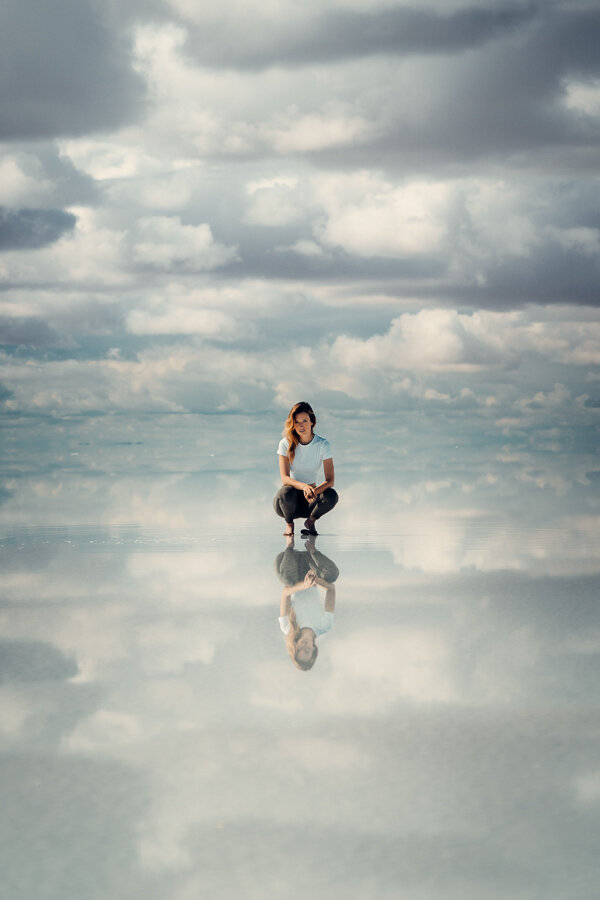
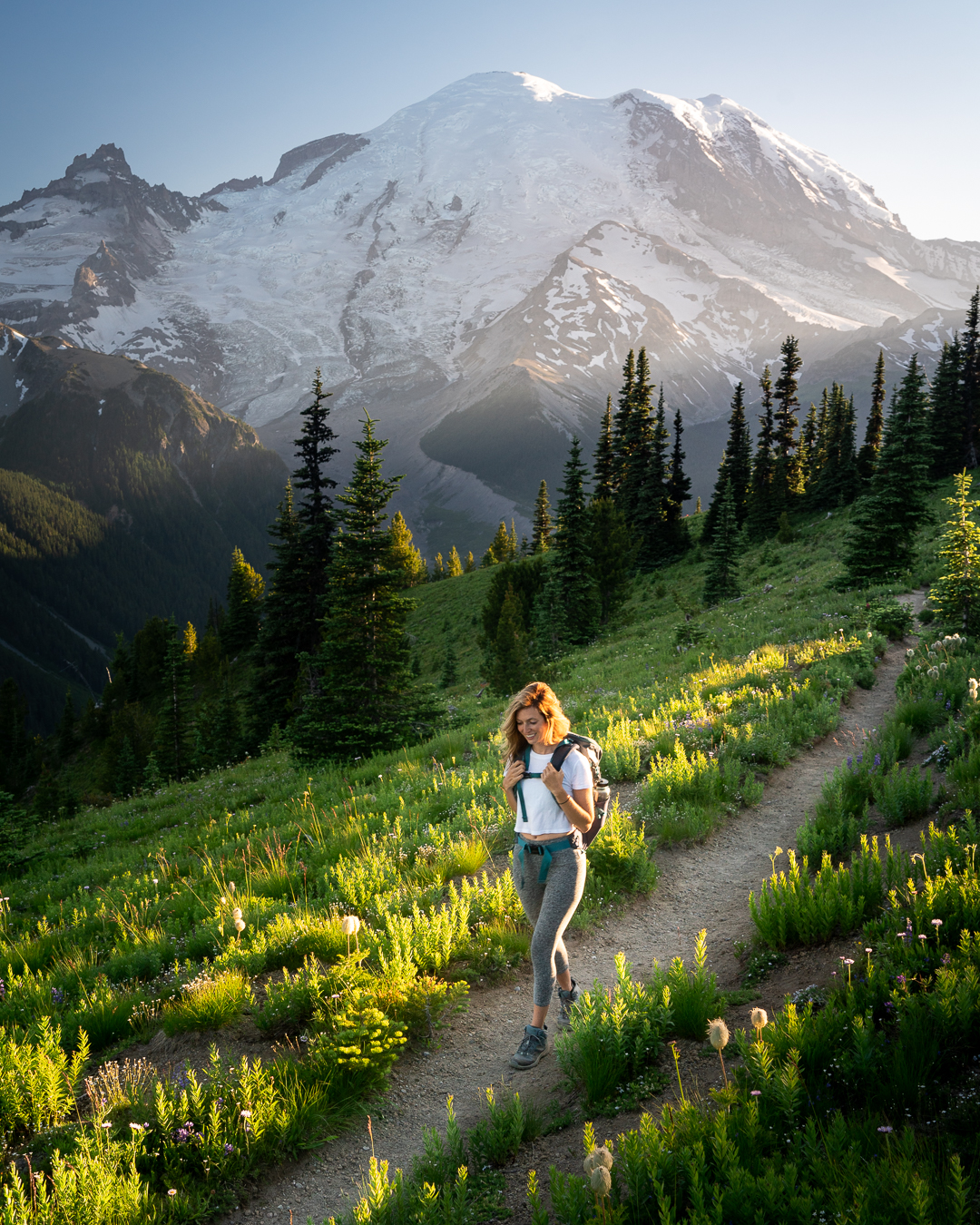
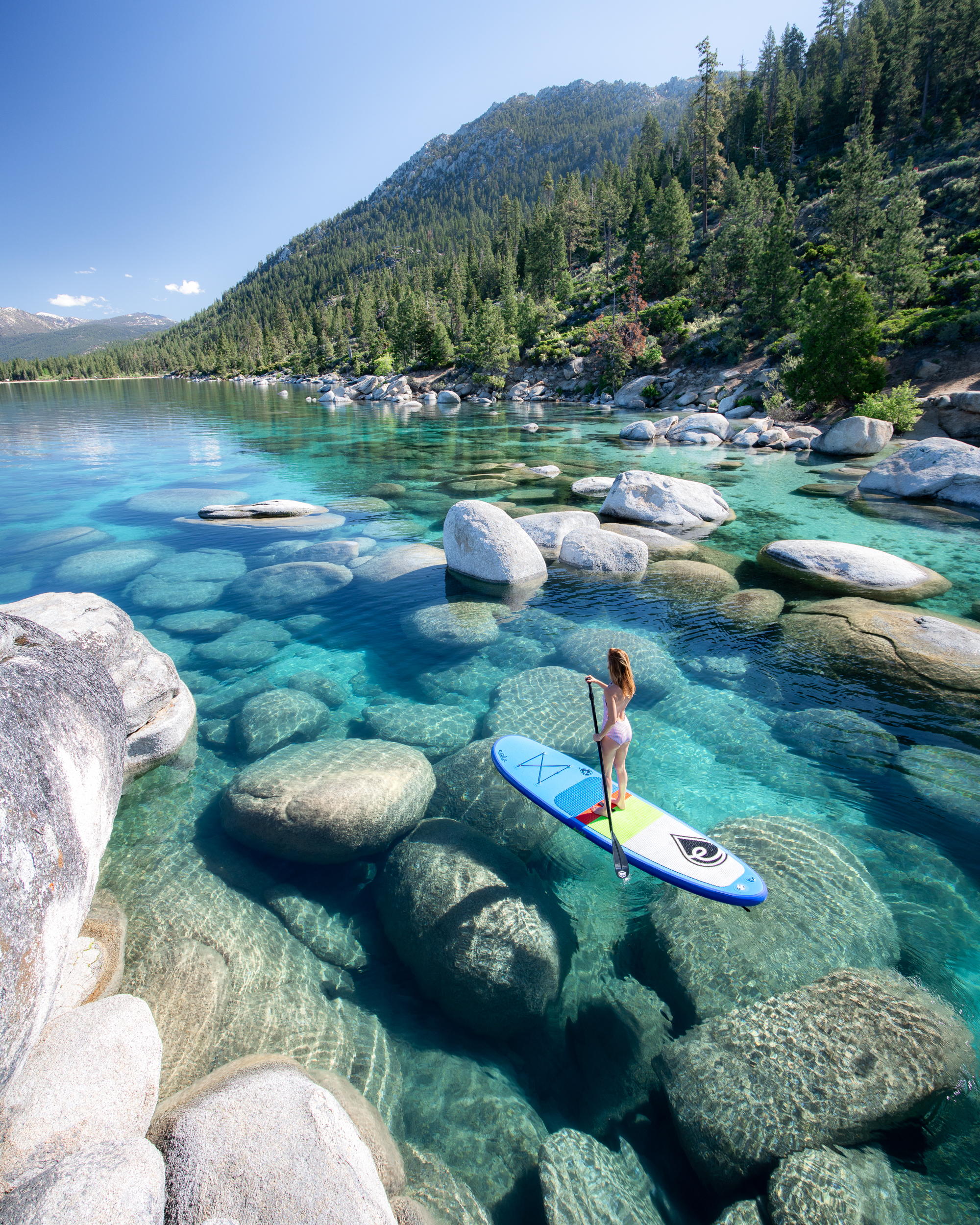
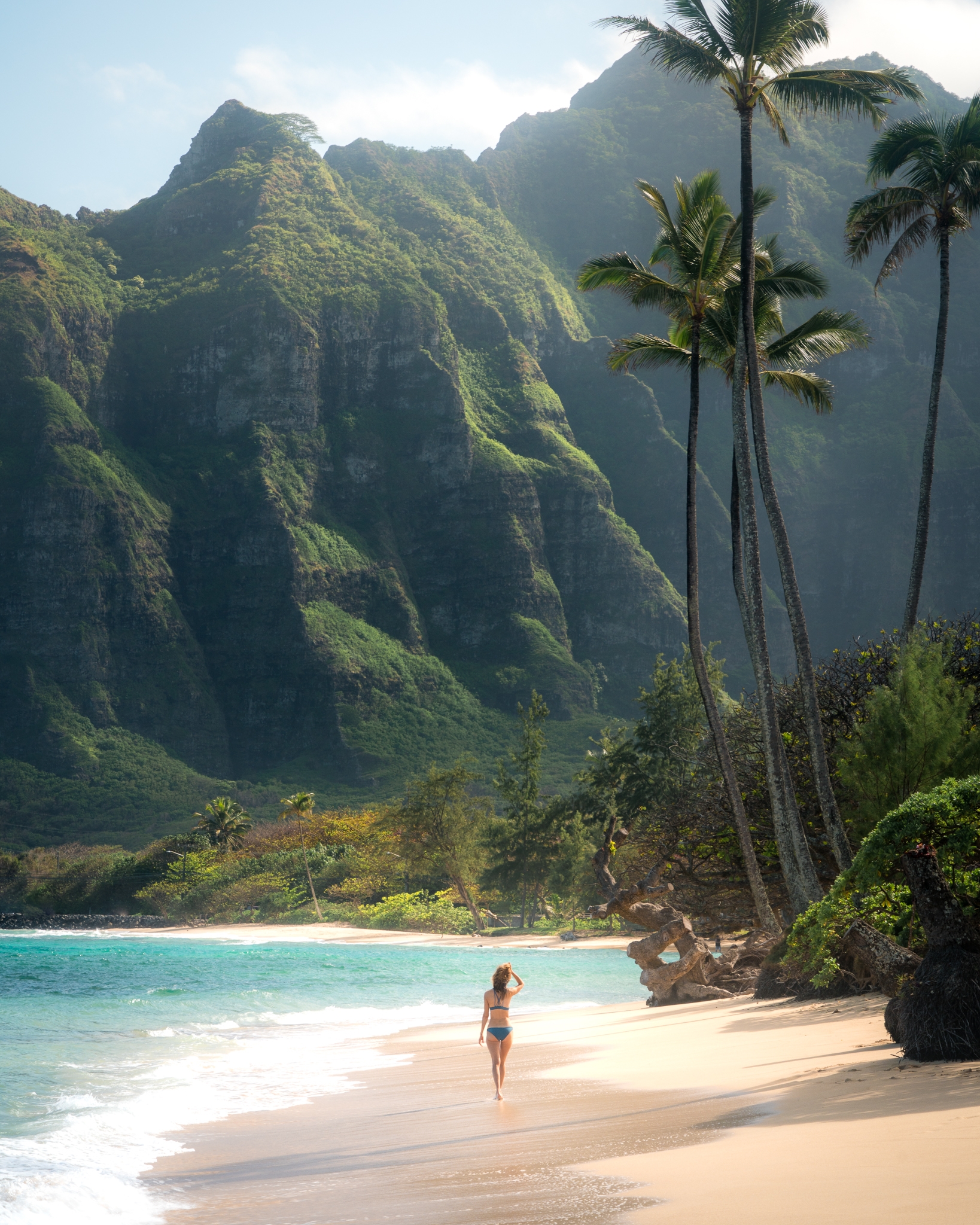
always, always love your posts and photos Jess! thanks for the info, its great to be able to pick up wisdom from your travel experiences!
Thank you so much, Miranda! That honestly makes my day to hear. I hope you’re having a wonderful weekend. 🙂
Another great post! Do you have any recommendations for a lightweight sleeping bag? And do you prefer down or synthetic?
Thanks so much! And sorry I didn’t get back to you sooner. I generally lean toward down bags because they tend to have a higher warmth-to-weight ratio than synthetic insulation. Plus, down compresses down very well in my bag. By lightweight do you mean low insulation for warm weather camping? or low carrying weight?
Contemplating camping along the lower Oregon coast during mid October. Will it be too cold? Should I book a campsite in advance. I want to start in Brookings and make my way down to Carmel by the Sea.
Hey Brandon. I’m so sorry that I missed your message. If you’ve already gone on your trip I hope that it went well. I know it’s been a bit rainy this past week. But in general, I think mid-October is a pretty good time to be on the Oregon coast. I actually spent the last week there myself. It shouldn’t be too cold, but you’ll want lots of layers. Enjoy your trip, if you’re still on it.
Loved this!! Soooo using dryer lint next camping trip! What a cool trip! I recently learned how to make fire starters with cotton make-up rounds dipped in soy wax! Genius! Lol
I was kinda delighted to see u using a Big Agnes tent! I’ve seen it in your pics & wondered if it was a BA . It’s what my brother & I have always used hiking on the AT (we each have our own)! Very cool article- I can’t wait to check out the meals u recommend and the clothes! Thanks ! Love er’thing u post & write!
Signed
A silly hiker/travel fan
@sarahnewtoit aka WiFi aka Wendy Gibson from Vienna, WV
Mountaineers are always free ~~
Oh my gosh Wendy! I can’t believe I missed your comment. I just came across it and it really made my day. I’m so happy you liked the post and your tent! I’d love to do some more hiking on the East Coast someday, I haven’t spent much time out there at all.
Hey Jess, I’m looking for a water filter and was wondering if U ever used a Sawyer squeeze? I’m choosing between the Sawyer and the Katadyn Befree. I read alot of comments that the Katadyn water bottle breaks easily, how has yours held up so far? Do you think I would be fine with those to drink tap water in south amerika? I like that the grayl also filters out water born viruses but it’s expensive and really heavy to bring along while backpacking.
Nice overview — clear and practical. Quick question: any strong preference between chemical tablets and a SteriPEN for winter trips where water may be cold and murky, or do you recommend carrying both just in case? Really liked the tip about always having tablets as a backup.
I would recommend always having the tablets on you because the weigh next to nothing and could really save the day if the batteries die in your SteriPEN or it stops working for any reason. But just FYI either of those options are filters, so they wont help out with murky. . . or cold water. After treatment the water will still be cold and murky.